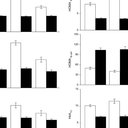Ethnopharmacology of the plants of genus Ajuga.
Słowa kluczowe
Abstrakcyjny
The plants of genus Ajuga are evergreen, clump-forming rhizomatous perennial or annual herbaceous flowering species, with Ajuga being one of the 266 genera of the family Lamiaceae. There are at least 301 species of the genus Ajuga with many variations. These plants, growing in Europe, Asia, Africa, Australia and North America, are used in gardens as ground cover or border for their foliage and beautiful flowers. Many of these plants have been used in traditional medicine as a remedy for fever, toothache, dysentery, malaria, high blood pressure, diabetes, gastrointestinal disorders, as anthelmintic, diuretic and antifungal, anti-inflammatory, and antimycobacterial agents. They are also used as insect growth inhibitor s. A large number of compounds have been isolated from the Ajuga plants, including phytoecdysteroids, neo-clerodane-diterpenes and diterpenoids, triterpenes, sterols, anthocyanidin-glucosides and iridoid glycosides, withanolides, flavonoids, triglycerides and essential oils. These compounds possess a broad spectrum of biological, pharmacological and medicinal properties, such as anabolic, analgesic, antibacterial, antiestrogenic, antifungal, anti-inflammatory, antihypertensive, antileukemic, antimalarial, antimycobacterial, antioxidant, antipyretic, cardiotonic, cytotoxic, hypoglycemic, and vasorelaxing activity, as well as antifeedant and insect growth-inhibitory properties. Thus, genus Ajuga has significant medicinal and economic importance.


